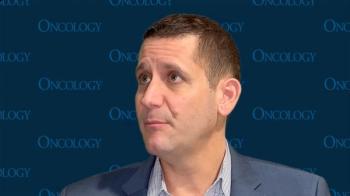
Benjamin H. Lowentritt, MD, FACS, Discusses Future Analyses for the Phase 3 SPOTLIGHT Trial in Recurrent Prostate Cancer
Future focuses following the phase 3 SPOTLIGHT trial will include identifying sites of recurrence and different intensity levels for 18F-rhPSMA-7.3 in suspected recurrent prostate cancer, according to Benjamin H. Lowenritt, MD, FACS.
In an interview with CancerNetwork® during the
Transcript:
The SPOTLIGHT trial data are really just coming to light and being reported. We're continuing to look at different subgroup analyses. [We are] also really drilling into some of the sites of recurrence and identifying where and when this may be most helpful. [We are] evaluating different levels of intensity, the [standardized uptake value], and other things within the actual imaging reports and how that may predict sites of disease. There is certainly continuing to be a lot of work done with the data from the SPOTLIGHT trial, which was only recently completed.
Reference
Lowentritt, B. Impact of clinical factors on 18F-rhPSMA-7.3 detection rates in men with recurrent prostate cancer: findings from the phase 3 SPOTLIGHT study. Presented at 2022 American Society for Radiation Oncology Annual Meeting (ASTRO); October 23-26, 2022; San Antonio, TX. Abstract 1049. Accessed November 3, 2022.
Newsletter
Stay up to date on recent advances in the multidisciplinary approach to cancer.
















































































